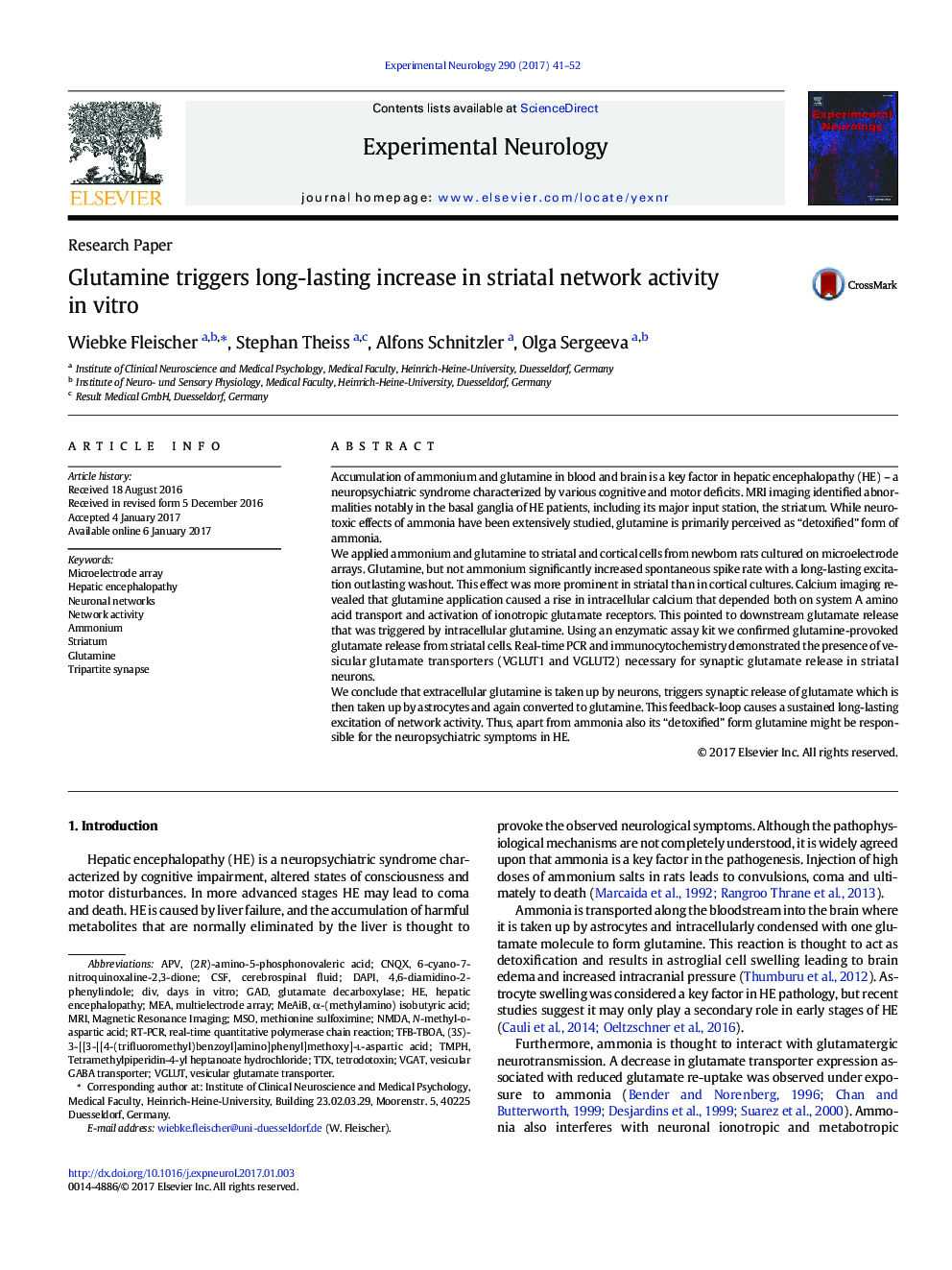| کد مقاله | کد نشریه | سال انتشار | مقاله انگلیسی | نسخه تمام متن |
|---|---|---|---|---|
| 5629292 | 1580149 | 2017 | 12 صفحه PDF | دانلود رایگان |

- Glutamine rapidly boosts neuronal network activity in vitro; ammonium has only minor effects.
- Glutamine is taken up by neurons where it triggers sustained glutamate release.
- Striatal networks are more susceptible to glutamine-induced excitation than cortical networks.
- Cultured striatal neurons possess the synaptic machinery for vesicular glutamate release.
Accumulation of ammonium and glutamine in blood and brain is a key factor in hepatic encephalopathy (HE) - a neuropsychiatric syndrome characterized by various cognitive and motor deficits. MRI imaging identified abnormalities notably in the basal ganglia of HE patients, including its major input station, the striatum. While neurotoxic effects of ammonia have been extensively studied, glutamine is primarily perceived as “detoxified” form of ammonia.We applied ammonium and glutamine to striatal and cortical cells from newborn rats cultured on microelectrode arrays. Glutamine, but not ammonium significantly increased spontaneous spike rate with a long-lasting excitation outlasting washout. This effect was more prominent in striatal than in cortical cultures. Calcium imaging revealed that glutamine application caused a rise in intracellular calcium that depended both on system A amino acid transport and activation of ionotropic glutamate receptors. This pointed to downstream glutamate release that was triggered by intracellular glutamine. Using an enzymatic assay kit we confirmed glutamine-provoked glutamate release from striatal cells. Real-time PCR and immunocytochemistry demonstrated the presence of vesicular glutamate transporters (VGLUT1 and VGLUT2) necessary for synaptic glutamate release in striatal neurons.We conclude that extracellular glutamine is taken up by neurons, triggers synaptic release of glutamate which is then taken up by astrocytes and again converted to glutamine. This feedback-loop causes a sustained long-lasting excitation of network activity. Thus, apart from ammonia also its “detoxified” form glutamine might be responsible for the neuropsychiatric symptoms in HE.
Journal: Experimental Neurology - Volume 290, April 2017, Pages 41-52